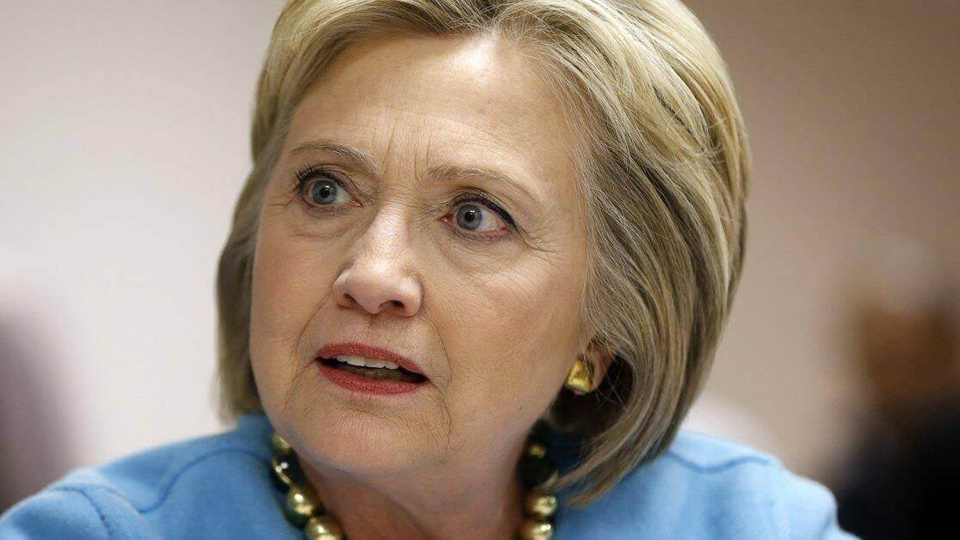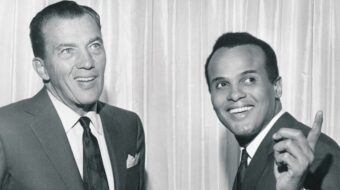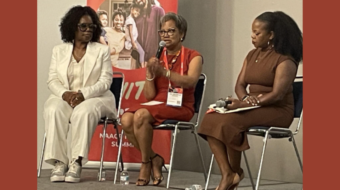
Hillary Rodham Clinton won the election, but because of the electoral college, the candidate with the most votes didn’t win for the second time in the past five elections. Since only 58.4 percent of the eligible population voted, Trump will occupy the presidency with an affirmative of barely more than 27 percent of the eligible vote. Our democracy is limited and restricted, and progressives and liberals are duty bound to make this case.
The Republicans will soon control all three branches of the federal government. The Supreme Court, now at a four-to-four tie, will undoubtedly become a supermajority bastion of reaction, because Antonin Scalia’s seat will be filled quickly, and, crudely put, liberal justices Ruth Bader Ginsburg (age 83) and Stephen Breyer (age 78) can’t stay healthy or live forever. The same holds true for Justice Anthony Kennedy (age 80), “a conservative who has occasionally voted with liberals.”
Some bright spots
There were some silver linings. The Working Families Party, based in trade unions and community organizations and refusing to act as a third-party spoiler, was victorious in state races in Pennsylvania, Rhode Island, and Connecticut. Furthermore, liberal/progressive ballot referendums passed all over. These included raising the minimum wage in Colorado and Maine. Doing that and also requiring businesses to provide employees with mandatory paid sick days in Arizona and Washington state. Defeating an anti-union right-to-work initiative in Virginia. Campaign finance reform in Missouri. Washington, D.C. statehood (certain for disapproval by the Republican Congress). A boost to investment in public schools in Georgia, Massachusetts, and localities across the country. Improved background checks for gun purchases in Nevada and Washington state. A soda tax in San Francisco, Oakland, Boulder, Colorado (and in Chicago’s Cook County two days after the election).
Marijuana for recreational use was legalized in California, Massachusetts, and Nevada; medical marijuana use was passed in Arkansas, Florida, and North Dakota; and restrictions on it were lifted in Montana. These particular referendums mean fewer youth will be locked up in the penal system for a harmless offense of possession or use, and people will be able to find cures or pain relief for various problems instead of needing to turn to our out-of-control pharmaceutical industry, which nearly always opposes such ballot measures.
Why did it happen?
Were racism, xenophobia and male supremacy the primary reasons to explain Trump’s victory, or were other reasons more critical?
In general, Black voters waited twice as long as white people to cast ballots; and other contractions of voting rights played a major role. As Bill Fletcher, Jr. wrote, “Trump was given a pass that would only be given to a white man in U.S. society… had [he] been a woman or of color, what would have happened? The answer is obvious.” Trump’s constant attacks on Muslims and “Mexican immigrants” diverted far too many white voters towards voting for prejudice. Also, it seems that many voters were and still are “unable” to vote for a woman to be president.
Others place the blame of Clinton’s loss primarily on factors outside her campaign not related to racism. These include a war on her character since 1992 and a social media that was flooded with false information. Julian Assange’s WikiLeaks felt a pious obligation to publish hacked emails from the Democratic National Committee leadership, but even left-liberal libertarian Bill Maher noted that such publication objectively aided Trump.
As some exit polling suggests, anti-Trump Republicans seemed able to hold their noses in order to win the Supreme Court, while their opponents were much less willing to vote for the imperfect candidate. Clearly, the Green and Libertarian parties played spoiler roles in some states – the Greens captured votes away from the Democrats, though the Libertarian vote is undoubtedly more contradictory.
Most importantly, in the minds of the Clinton campaign, were FBI Director James Comey’s letters to Congress the week before the election, especially in the key battleground states.
Analysts who place the fundamental blame on Clinton’s campaign itself point to the dozens of counties in Ohio, Pennsylvania, and other so-called rust belt states that Obama won in 2008 and 2012 but that went to Trump won this time. However, this point assumes that some or many white voters who went for Obama are relatively free of racism, which is surely a misinterpretation.
Secretary Clinton, between leaving the State Department and announcing her candidacy, spent two years giving speeches, earning millions of dollars. To do this, but then campaign as a lifetime fighter for the people, was a huge contradiction (even though Trump’s claim to be a “blue collar worker” was even more outrageous).
Clinton clearly was unable to adequately reconstruct the Obama coalition: She won less support from African Americans, Latinos, youth, Asians and white voters irrespective of social class. Bernie Sanders fired up some elements of that coalition, but Clinton’s treatment of him, especially with the exposure of the DNC collusion, alienated a number of potential supporters.
The bulk of Clinton’s campaign centered on Trump’s unfitness for the presidency. Unlike Trump, she did not rail against unfair trade treaties (that were pushed by America’s capitalist class), probably because of her association with NAFTA during her husband’s presidency and her initial favoring of the Trans-Pacific Partnership. Trump hammered on the point that America, no longer great, had to be made great again; arguing instead that America is “already great” fell flat among white voters in depressed areas.
Too early for conclusions?
Many voices are claiming that Trump won primarily via a white working-class revolt. This view is not without any merit but is problematic for several reasons. Firstly, it is interesting that the mass media, for years unable to utter the term “working class,” seems to do so only in reference to white people. Secondly, from even well-intentioned liberals or self-described progressives, the term is equated with “lower income,” which should be completely rejected by the left. Nonetheless, the claim is often that many now-permanently unemployed white workers, in dire straits due to trade treaties that result in U.S. capitalists closing shop here and setting up abroad, gave Trump a fundamental boost in votes. As an added measure, it is correctly noted that in these devastated areas there has arisen an opioid drug problem (morphine, heroin, synthetic opioids such as oxycodone, etc.).
This claim requires much scrutiny, however. Firstly, Trump’s margin of victory in close states was probably due more to rural districts than urban ones. There was a greatly increased rural and small city turnout, including among voters who haven’t voted ever or for decades. White unemployed factory workers reside more in small cities and suburbs. Secondly, in parts of Black and Latino communities, there has been permanent unemployment and opioid drug problems for years, but no ultra-right movements have arisen. Thirdly, automation probably accounts for more of the crisis of unemployment in capitalism than does the export of capital and outsourcing, but that fact is fairly invisible.
Nonetheless, statistics experts will have to sort through all of the data when it is finally and completely collected. For now, we can argue with certainty that long before this election, there was a significant shift of blue-collar white workers to the Republican Party. In large part, argues Heather C. McGhee, President of Demos, whites have been gravitating toward the GOP since LBJ signed the Civil Rights Act of 1964 and the Voting Rights Act of 1965.
When all the data are in, and various factors can be more thoroughly weighed against one another, we might be able to assert with great authority why the winner of the popular vote lost the vote of the electoral college. Until then, it’s pretty clear that the multi-racial, multi-national, male-female working class, both unionized and unorganized, is in for a harsh beating. Beyond that, the quality of life of all African Americans, Latinos, and other racially/nationally oppressed groups is sure to worsen. The apparent spike in hate crimes, with Muslim and Jewish people bearing the brunt of attacks on minority religions, will also do great harm to the immediate victims as well as to the unity of all working people.
Yes, there has been early resistance, a couple of months before Trump has even taken office. This resistance must not view centrist Democrats and their supporters as the enemy – nothing short of the broadest of unity is a winning strategy.










